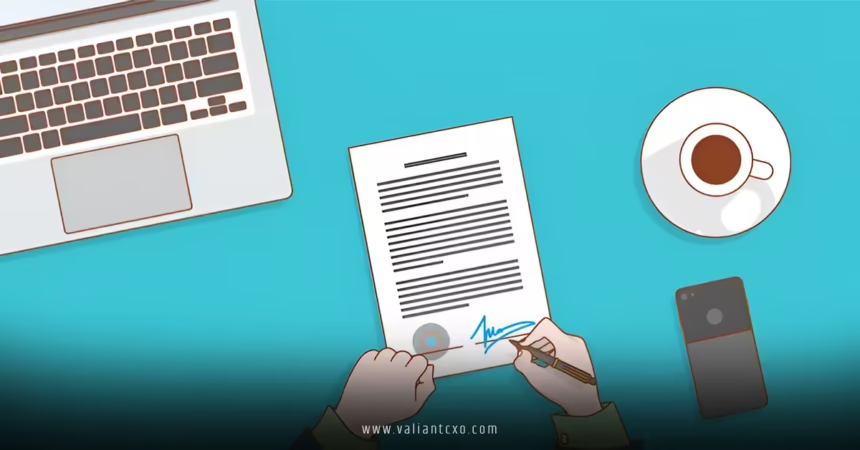Creating compelling sales proposals that close deals faster is the secret sauce to turning prospects into loyal clients. In today’s fast-paced business world, a well-crafted proposal isn’t just a document—it’s your chance to shine, persuade, and seal the deal. But what makes a sales proposal stand out? How do you craft one that grabs attention, builds trust, and gets that coveted “yes” quicker? Let’s dive into the art and science of creating compelling sales proposals that close deals faster, breaking down the process into actionable steps that anyone can master.
Why Creating Compelling Sales Proposals That Close Deals Faster Matters
Imagine you’re a chef, and your sales proposal is the dish you’re serving to a hungry client. A bland, uninspired plate won’t cut it—you need flavors that pop, presentation that wows, and a taste that lingers. A compelling sales proposal does exactly that: it captures attention, addresses needs, and leaves the client eager to sign. In a competitive market, where prospects are bombarded with options, creating compelling sales proposals that close deals faster can be the difference between landing a client and losing them to someone else.
Proposals aren’t just about listing services or prices. They’re about telling a story—one where your solution is the hero, solving the client’s problems with precision. According to HubSpot, a well-structured proposal can increase close rates by up to 20%. That’s no small potatoes! So, let’s explore how to make your proposals irresistible.
Understanding Your Client’s Needs
Researching the Client’s Pain Points
Before you even think about typing “Dear [Client Name],” you need to get inside their head. What keeps them up at night? Are they struggling with inefficiencies, losing revenue, or facing customer retention issues? Creating compelling sales proposals that close deals faster starts with understanding these pain points. Dig deep—check their website, read their reviews, or even have a discovery call. The more you know, the better you can tailor your proposal to hit their sweet spot.
For example, if you’re pitching to a small business owner, they might be juggling too many tasks. Your proposal should highlight how your solution saves them time, not just money. It’s like offering a lifeboat to someone stranded at sea—specific, relevant, and impossible to ignore.
Aligning Your Solution with Their Goals
Once you’ve nailed down their challenges, connect the dots to their goals. Are they aiming to scale, boost brand awareness, or streamline operations? Your proposal should scream, “I get you, and I’ve got the perfect fix!” Creating compelling sales proposals that close deals faster means showing the client you’re not just selling a service—you’re helping them achieve their dreams. Use data or case studies to back up your claims. For instance, if you’re proposing a marketing strategy, mention how a similar approach increased another client’s leads by 30%. Numbers build trust.
Structuring a Winning Sales Proposal
Crafting an Attention-Grabbing Cover Page
First impressions matter. Your cover page is the handshake, the smile, the “let’s do business” vibe. Keep it clean, professional, and visually appealing. Include your logo, the client’s name, and a bold title like “Creating Compelling Sales Proposals That Close Deals Faster for [Client Name].” A splash of color or a sleek design can make it pop, but don’t go overboard—think elegant, not circus.
Writing a Persuasive Executive Summary
The executive summary is your elevator pitch on paper. In a few sentences, summarize why your solution is the best fit. Highlight the client’s key challenges and tease how you’ll solve them. For example: “At [Your Company], we specialize in creating compelling sales proposals that close deals faster by streamlining your sales process and boosting conversions.” Keep it concise but punchy, like a movie trailer that leaves them wanting more.
Detailing Your Solution with Clarity
Here’s where you get to flex your expertise. Break down your solution into clear, digestible sections. Use bullet points or numbered lists to outline the steps, tools, or strategies you’ll employ. For instance:
- Step 1: Analysis – We’ll audit your current sales process to identify bottlenecks.
- Step 2: Customization – We’ll design a tailored strategy to address your unique needs.
- Step 3: Implementation – Our team will execute the plan with regular check-ins.
This structure makes it easy for clients to follow along. Avoid jargon—explain things like you’re talking to a friend over coffee. Creating compelling sales proposals that close deals faster means making complex ideas feel simple and achievable.
Highlighting Benefits, Not Just Features
Clients don’t care about your shiny new software or your 10-step process unless it benefits them. Instead of saying, “Our CRM has 50+ features,” say, “Our CRM saves you 10 hours a week by automating follow-ups.” Paint a picture of how their life improves with your solution. It’s like selling a car by talking about the freedom of the open road, not the engine specs.
Building Trust Through Credibility
Showcasing Case Studies and Testimonials
Nothing screams “trust me” like proof. Include a brief case study or testimonial from a past client to show you’ve walked the walk. For example: “We helped [Client X] increase their close rate by 25% in three months by creating compelling sales proposals that close deals faster.” If possible, use real numbers and names (with permission). According to Forbes, proposals with case studies are 15% more likely to win clients. That’s a stat you can’t ignore!
Being Transparent About Pricing
Nobody likes surprises, especially when it comes to money. Be upfront about costs, but frame them as an investment. Break down the pricing into clear categories—setup fees, monthly costs, or optional add-ons. If your pricing is higher than competitors, explain why: maybe it’s your unmatched support or faster results. Creating compelling sales proposals that close deals faster means building trust, and transparency is the foundation.
Adding a Personal Touch
Customizing for the Client
Generic proposals are like spam emails—they get ignored. Personalize every proposal with the client’s name, industry, and specific challenges. Reference a recent conversation or a detail from their website. For example: “During our call, you mentioned struggling with lead follow-ups. Our solution tackles that head-on.” This shows you’re paying attention, which builds rapport.
Using Visuals to Enhance Engagement
Words are great, but visuals are the cherry on top. Add charts, graphs, or infographics to illustrate your points. For instance, a graph showing projected revenue growth can make your proposal more convincing. Tools like Canva make it easy to create professional visuals without a design degree. Just don’t overdo it—keep it clean and relevant.
Creating a Sense of Urgency
Highlighting Time-Sensitive Benefits
Why should the client act now? Maybe your service includes a limited-time discount, or their problem is costing them money every day they delay. For example: “By implementing our solution now, you could start seeing results in as little as two weeks.” Creating compelling sales proposals that close deals faster often involves a gentle nudge to act quickly without being pushy.
Including a Clear Call to Action
Don’t leave the client guessing what to do next. End your proposal with a bold, clear call to action: “Ready to boost your sales? Let’s schedule a call to finalize the details.” Make it easy for them to say yes—include your contact info, a link to book a meeting, or even a signature line for approval.
Polishing Your Proposal for Perfection
Proofreading for Clarity and Professionalism
A typo-ridden proposal is like showing up to a meeting with spinach in your teeth—embarrassing and avoidable. Proofread meticulously, or use tools like Grammarly to catch errors. Read it aloud to ensure it flows naturally. Creating compelling sales proposals that close deals faster requires polish; even small mistakes can undermine your credibility.
Keeping It Concise Yet Comprehensive
Clients are busy. A 50-page proposal might impress you, but it’ll overwhelm them. Aim for 5-10 pages, depending on the project’s complexity. Cover all the essentials—problem, solution, benefits, pricing, and next steps—without fluff. Think of it as a perfectly brewed espresso: small, strong, and impactful.
Leveraging Technology for Efficiency
Using Proposal Software
Tools like PandaDoc or Proposify can streamline the process of creating compelling sales proposals that close deals faster. These platforms offer templates, e-signatures, and analytics to track how clients interact with your proposal. For example, you can see if they lingered on the pricing section, giving you insight for follow-ups.
Tracking and Following Up
Don’t just send your proposal and hope for the best. Follow up within 48 hours with a friendly email or call: “Hi [Client Name], just checking in on the proposal. Any questions?” This shows you’re proactive and keeps the momentum going. Data from Salesforce suggests that timely follow-ups can increase close rates by 10%.
Conclusion
Creating compelling sales proposals that close deals faster is both an art and a science. By understanding your client’s needs, structuring your proposal clearly, and adding a personal touch, you can craft a document that not only persuades but also builds trust. Use visuals, case studies, and transparent pricing to make your proposal stand out, and don’t forget to create urgency with a strong call to action. Whether you’re a seasoned pro or just starting out, these strategies can transform your proposals into deal-closing machines. So, grab that keyboard, channel your inner storyteller, and start crafting proposals that win hearts—and contracts!
FAQs
1. What makes creating compelling sales proposals that close deals faster different from standard proposals?
Creating compelling sales proposals that close deals faster focuses on tailoring the content to the client’s specific needs, using persuasive storytelling, and including clear calls to action. Unlike generic proposals, they prioritize benefits over features and build trust through transparency and proof like case studies.
2. How long should a sales proposal be?
A good sales proposal is typically 5-10 pages, depending on the project’s complexity. It should be concise yet comprehensive, covering the client’s problem, your solution, pricing, and next steps without overwhelming them.
3. How can I make my proposal visually appealing?
Incorporate clean visuals like charts, graphs, or infographics using tools like Canva. Keep the design professional and uncluttered, ensuring visuals support your message rather than distract from it.
4. Why is follow-up important after sending a proposal?
Following up keeps the conversation alive and shows you’re proactive. It also gives you a chance to address any questions, increasing the likelihood of closing the deal. Timely follow-ups are key to creating compelling sales proposals that close deals faster.
5. Can proposal software really help in creating compelling sales proposals that close deals faster?
Yes! Tools like PandaDoc or Proposify offer templates, e-signatures, and analytics to streamline the process and track client engagement, helping you refine your approach and close deals more efficiently.
For More Updates !! : valiantcxo.com


